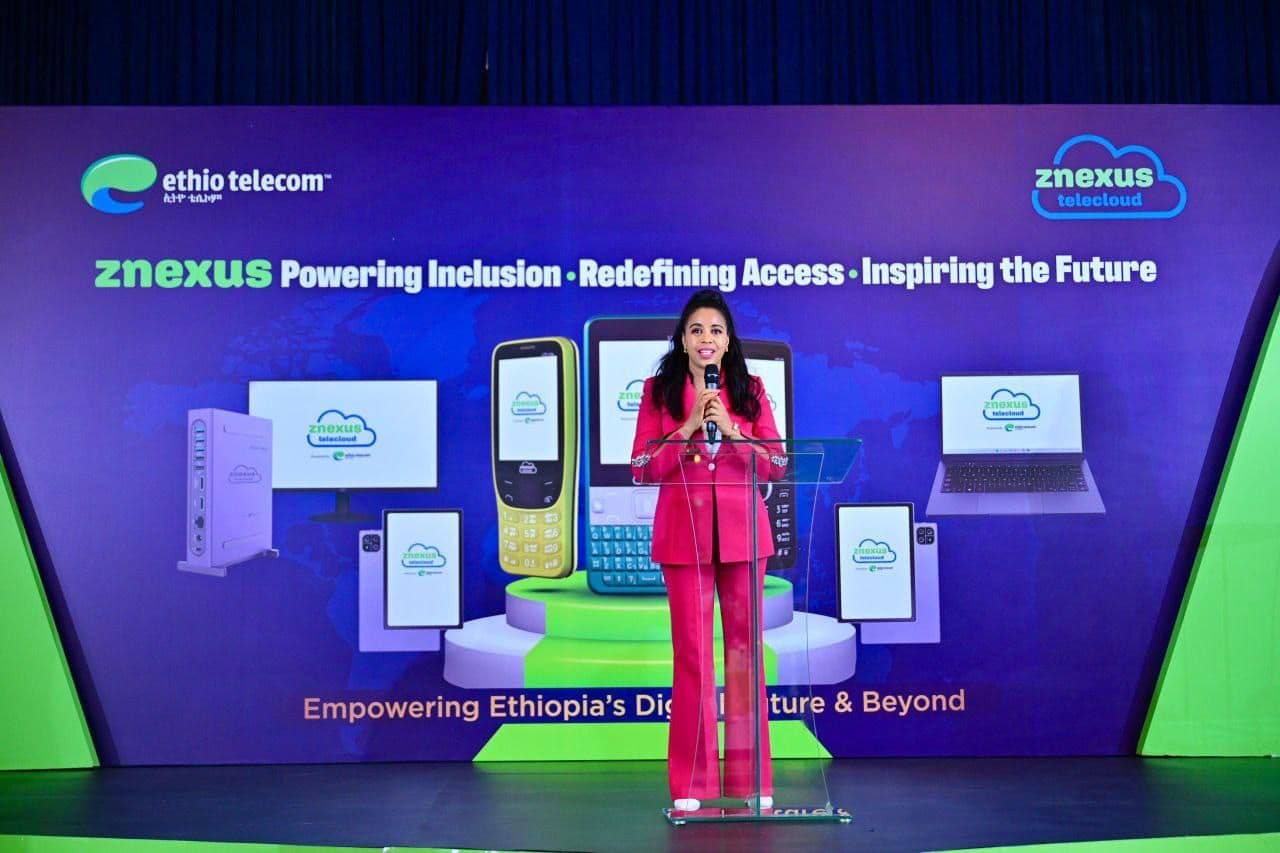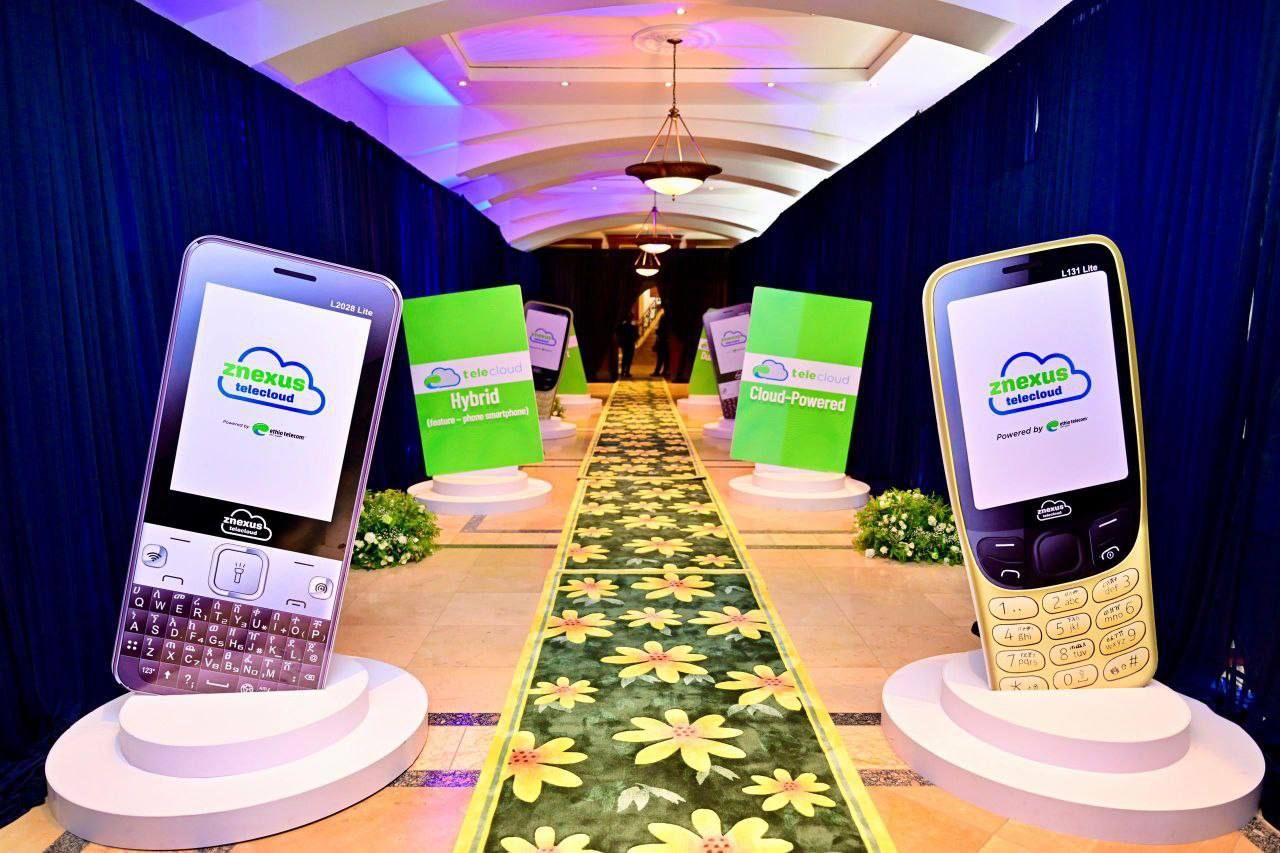Progress for 0 ad
Progress for 1 ad
Progress for 2 ad
Progress for 3 ad


Munir Shemsu
Addis Ababa, Ethiopia

Ethio telecom has rolled out a 4G-enabled advanced feature phones with prices starting at just 2,500 birr (about $17), as part of a new push to make internet access affordable for millions of Ethiopians still offline.
The devices, unveiled Thursday evening at the Sheraton Addis Hotel, anchor the state-owned operator’s new Znexus telecloud line, a suite of cloud-connected products and services designed to pull low-income users into the digital economy.
The Znexus line, which also includes tablets, laptops, and thin-client PCs (lightweight computers), offers a human-centered, cloud-powered solution designed to make digital access simpler and more affordable.
The Znexus phones feature both keypads and touchscreens, extended battery life suited for rural and low-power areas, and built-in teleStorage that removes the need for large on-device storage. Each device comes preloaded with essential services such as telebirr, educational content, and selected apps, built to support first-time users through an accessible, low-friction onboarding experience.
“Affordability of devices remains one of the most crippling barriers to internet adoption,” said Frehiwot Tamiru, Ethio telecom’s chief executive officer, during the launch event. She added that the company is exploring local manufacturing options to further reduce costs and improve accessibility. The company has not yet disclosed who is manufacturing the phones now.
The rollout reflects the operator’s ambition to evolve from a pure telecom player into a full-fledged digital-services provider that bundles connectivity, devices, applications, and cloud infrastructure under one brand.
The Znexus phone range includes the 127 Lite, 131 Lite, and 2028 Lite models, each preloaded with cloud-based apps such as YouTube, TikTok, Facebook, and a selection of games, short dramas, and news content. The new lineup marks a clear departure from Ethio Telecom’s previous device portfolio. By comparison, the Sunrise P1801, the company’s cheapest feature phone, is priced at 1,715 birr. Meanwhile, the most expensive Znexus phone costs only 2,949 birr.
Until now, the telecom operator has primarily sold a mix of mainstream and niche brands, including Samsung, Honor, Nokia, ZTE, Nubia, Tecno, and itel. Most of these devices fall into the midrange bracket of 10,000 to 50,000 birr, leaving a gap in the low-cost smartphone segment that Znexus now aims to fill.
However, Znexus' low prices also mean limited capabilities. The phones have just 128 MB of internal storage and include 2 GB of cloud storage to supplement local capacity.
Despite a surge in Ethio telecom's mobile subscriptions from 37.9 million to roughly 86 million users in just seven years, Ethiopia’s digital reach remains uneven. Only about 47 million subscribers currently use mobile internet services, according to the company’s latest figures.
Smartphone usage, too, remains limited. Of all devices connected to Ethio Telecom’s network, only 34.3 million are smartphones, translating to a 41.8 percent penetration rate. The majority, nearly 56 percent, are feature phones.

According to a 2024 report by GSMA, affordability is the biggest barrier to mobile internet adoption in Ethiopia. Despite a marked drop in basic data prices by both telecom operators in the country over the past few years, consumer surveys showed a year-on-year increase in the percentage of people who cite affordability as the most significant barrier.
“Infrastructure shortages are no longer a problem in most of the country,” she said. “Now, the challenge is ensuring people can afford the devices and have the skills to use them.”
The launch comes as the government accelerates plans to roll out e-government platforms, digital ID systems, and online public services under its Digital Ethiopia 2025 strategy. Ethio telecom’s initiative, company officials say, will help enable citizens to access these services seamlessly by providing both the hardware and the cloud ecosystem needed to support them.
“We need to address affordability and accessibility if we are to realize our goals under Digital Ethiopia,” Frehiwot said.
In Kenya, Safaricom has taken a similar approach with its affordable 4G smartphones, introduced under the Lipa Mdogo Mdogo device financing program launched in 2020. The initiative allows customers to pay for smartphones in small daily installments, making internet-enabled devices accessible to low-income users previously limited to 2G handsets. The program has been instrumental in driving digital inclusion and expanding Safaricom’s mobile data ecosystem, with the company announcing it has sold over 2 million 4G phones since its inception.
👏
😂
❤️
😲
😠

Munir Shemsu
Munir S. Mohammed is a journalist, writer, and researcher based in Ethiopia. He has a background in Economics and his interest's span technology, education, finance, and capital markets. Munir is currently the Editor-in-Chief at Shega Media and a contributor to the Shega Insights team.
Your Email Address Will Not Be Published. Required Fields Are Marked *